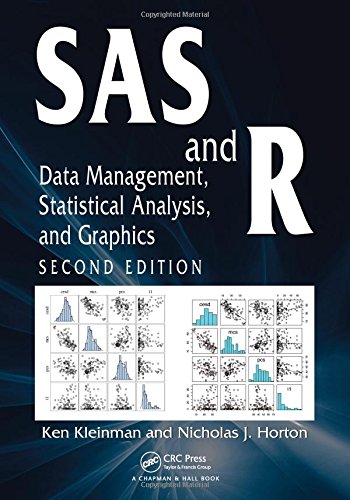

Most ebook files are in PDF format, so you can easily read them using various software such as Foxit Reader or directly on the Google Chrome browser.
Some ebook files are released by publishers in other formats such as .awz, .mobi, .epub, .fb2, etc. You may need to install specific software to read these formats on mobile/PC, such as Calibre.
Please read the tutorial at this link: https://ebookbell.com/faq
We offer FREE conversion to the popular formats you request; however, this may take some time. Therefore, right after payment, please email us, and we will try to provide the service as quickly as possible.
For some exceptional file formats or broken links (if any), please refrain from opening any disputes. Instead, email us first, and we will try to assist within a maximum of 6 hours.
EbookBell Team

5.0
48 reviewsAn Up-to-Date, All-in-One Resource for Using SAS and R to Perform Frequent Tasks
The first edition of this popular guide provided a path between SAS and R using an easy-to-understand, dictionary-like approach. Retaining the same accessible format, SAS and R: Data Management, Statistical Analysis, and Graphics, Second Edition explains how to easily perform an analytical task in both SAS and R, without having to navigate through the extensive, idiosyncratic, and sometimes unwieldy software documentation. The book covers many common tasks, such as data management, descriptive summaries, inferential procedures, regression analysis, and graphics, along with more complex applications.
New to the Second Edition
This edition now covers RStudio, a powerful and easy-to-use interface for R. It incorporates a number of additional topics, including using application program interfaces (APIs), accessing data through database management systems, using reproducible analysis tools, and statistical analysis with Markov chain Monte Carlo (MCMC) methods and finite mixture models. It also includes extended examples of simulations and many new examples.
Enables Easy Mobility between the Two Systems
Through the extensive indexing and cross-referencing, users can directly find and implement the material they need. SAS users can look up tasks in the SAS index and then find the associated R code while R users can benefit from the R index in a similar manner. Numerous example analyses demonstrate the code in action and facilitate further exploration. The datasets and code are available for download on the book’s website.